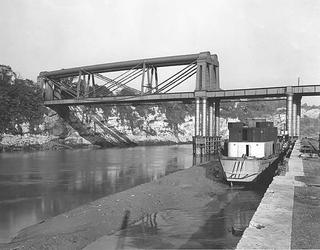
Boundary marker, South Devon Railway
- Made:
- circa 1846 in unknown place
- maker:
- South Devon Railway
Boundary marker, South Devon Railway, stone, with carved inscription "S D R", about 1846.
South Devon Railway boundary stone, dating from about 1846.
Boundary markers like this were used to clearly identify the limits of railway land and to distinguish them from adjacent property. Stones or posts were typically used where it was difficult to install a fence or hedge, where there was a risk of encroachment by other landowners, or where there had been a dispute over land ownership. They also delineated one railway company’s territory from another’s, for instance to make it clear who was responsible for maintaining a particular stretch of line.
The boundary stone is a roughly hewn granite block inscribed with the letters “S D R”.
The South Devon Railway was formed to connect Exeter with Plymouth and Torbay and was authorised by an Act of Parliament passed in July 1844. The engineer was Isambard Kingdom Brunel and the line was built to his preferred 7 ft ¼ ins (2140mm) gauge.
Brunel adopted the atmospheric system to power the trains. A pipe was laid between the rails and stationary engines at intervals along the line exhausted air from the tube, creating a partial vacuum which drove pistons below the trains’ leading carriages. The pistons slotted into the tube, which maintained the vacuum by a continuous leather seal.
The first section of the railway, from Exeter to Teignmouth, opened in March 1846, with the trains powered by locomotives leased from the Great Western Railway. The first trains using the atmospheric system ran in 1847, but there were so many technical difficulties that it was abandoned in September 1848. From that point onwards the South Devon Railway’s trains were pulled by steam locomotives.
The line to Plymouth was completed in 1849 and in 1876 the company was taken over by the Great Western Railway. Today, the South Devon Railway forms an important part of the main line from London Paddington to Plymouth.
Details
- Category:
- Railway Infrastructure
- Object Number:
- 2002-7472
- Materials:
- stone
- type:
- boundary marker
- credit:
- British Rail, Clapham




